Nieuport Ni-17, Hobby Craft, 1: 32, Maj. William Avery Bishop, 60 sqd. RFC, 72 victories.
This is my second 1:32 scale model that I have built in my life. So training for better models.
A fairly simple model with very little detail. I modified the engine cover, rebuilt and modified the headrest to remove the hole and made the propeller cone and telescopic sight which were completely missing from the kit. I completed the cockpit with wire braces and other necessary details that the model lacks. I redesigned the machine gun to look like a machine gun. I also added chassis suspension and spurs.
Bishop arrived with No. 60 Squadron at Filescamp Farm near Arras, flying a Nieuport 17 fighter. At the time, the average life expectancy of a new pilot in the sector was 11 days, and German aces outshot British aircraft 5:1.
The following day, Bishop claimed his first victory when he was one of four Nieuports to engage three D.III Scout Albatross near St Leger. Bishop shot down and mortally wounded Lt. Theiller, but his engine failed. Bishop landed in no man's land, 300 yards (270 m) from the German front line. After fleeing to Allied trenches, Bishop spent the night on the ground in the rain.
On April 8, he scored his fifth victory and became an ace. To celebrate, Bishop's mechanic painted the nose of the plane blue, the sign of an ace. Former 60 Squadron member Captain Albert Ball, at the time the highest scoring ace in the Empire, wore a red cone.
Bishop's no-holds-barred style of flying always kept him "ahead" and led his pilots into battle for enemy territory. Bishop soon realized that this could eventually see him shot down; after one patrol the mechanic counted 210 bullet holes in his plane. His new method of using a surprise attack proved successful; in April alone he claimed 12 aircraft and was awarded the Military Cross for his participation in the Battle of Vimy Ridge. The successes of Bishop and his blue-nosed aircraft were noticed by the Germans and they began to refer to him as the "Hell Maid". Ernst Udet called him "England's greatest scouting ace" and one Jasta had a bounty on his head.
On April 30, Bishop survived an encounter with Jasta 11 and Manfred von Richthofen, the Red Baron. In May, Bishop received the Distinguished Service Order for shooting down two aircraft while being attacked by four others.
On 2 June 1917, Bishop flew a solo mission behind enemy lines to attack German-held airfields, where he claimed to have shot down three aircraft that had taken off to attack him and destroyed several others on the ground. He was awarded the Victoria Cross (VC) for this feat, although it has been suggested that he may have embellished his achievement, notably by historian Brereton Greenhouse in his 2002 book The Making of Billy Bishop. His VC (awarded 30 August 1917) was one of two awarded in contravention of an arrest warrant requiring witnesses (the other being the Unknown Soldier), and as German records have been lost and archived documents relating to the VC have also been lost, there is no way of confirming whether there were some witnesses. It seems to have been common practice at this time to allow a bishop to claim a victory without requiring confirmation or verification from other witnesses. In July, No. 60 Squadron received the new Royal Aircraft Factory SE5, a faster and more powerful aircraft with better pilot visibility. In August 1917, Bishop surpassed Albert Ball in victories to become (temporarily) the highest scoring ace in the RFC and the third best ace of the war, behind only the Red Baron and René Fonck.
The Canadian government became increasingly concerned about the effect on morale if Bishop was killed, so he was ordered to return to England on 18 June to help organize the new Canadian Flying Corps. Bishop was not satisfied with the order that came so soon after his return to France. He wrote to his wife: "This is always so annoying." The order stated that he was to leave France by noon on June 19. That morning, Bishop decided to fly one last solo patrol. In just 15 minutes of fighting, he added five more victories to his total. He claimed to have shot down two Pfalz D.IIIa reconnaissance aircraft, caused two others to collide and shot down a German reconnaissance aircraft.
On 5 August, Bishop was promoted to lieutenant-colonel and given the post of "designate commander of the Canadian Air Force Section of the General Staff, Canadian Forces Overseas Command". He was on board a ship returning from a reporting visit to Canada when news of the armistice arrived. Bishop was released from the Canadian Expeditionary Force on 31 December and returned to Canada.
By the end of the war he had claimed some 72 aerial victories, including two balloons, 52 and two shared "destroyed" and 16 "out of control". Historians including Hugh Halliday and Brereton Greenhouse (both were official historians of the Royal Canadian Air Force) have suggested that the actual total was much lower. Brereton Greenhouse felt that the actual number of enemy aircraft destroyed was only 27.
But I don't think it matters how many planes someone shot down or what the nationalities were. For me, heroes are all those who at that time were able to sit in the often untried, flimsy airplanes.
Thank you for watching.
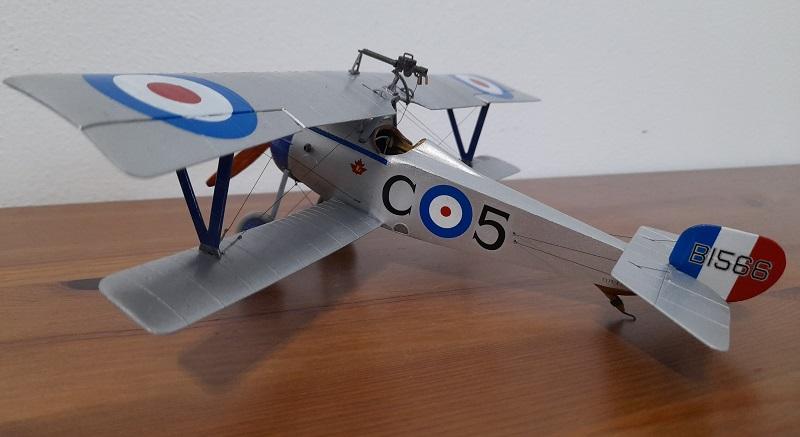
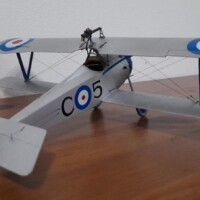
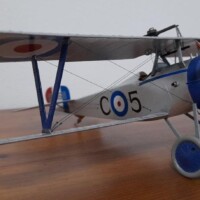
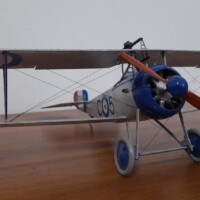

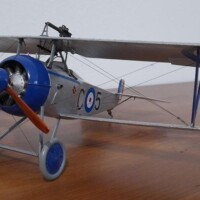
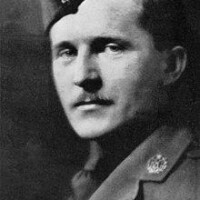
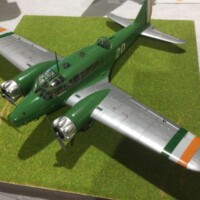
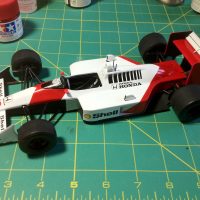
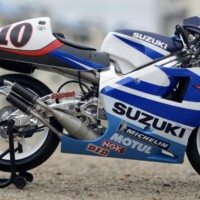
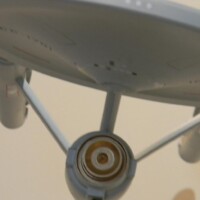
Excellent job, Milan! You surely made the most of the somehow simplistic Hobbycraft kit.
Well done!
Thanks Spiros.
Great result, Milan @milantesar
Doesn't look simple to me, still quite some details, especially with the rigging.
Great article about Bishop.
Thanks John, it's not a bad kit, but by today's standards, it seems poor to me.
Look great. The kit is simple but does has a few challenges.
Thanks Mike.
Another fine biplane Milan.
Thanks Ian.
Milan Tesař (@milantesar)
You have done a wonderful job with this model. It looks very nice. I especially enjoyed reading your article about Bishop. I have two of these kits in the stash / collection. One is the exact same one you have, and the other one has a different set of decals. The boxes are numbered different, but the contents inside them, (besides the decals), are the same.
The second kit has a set of decals for Charles Nungesser's plane. It has French markings, with his "Black heart and coffin / skull, candles in it" logo on the side of the fuselage, and Red / White / Blue stripes on the wings.
I am thinking about starting a WW1 "Great War" group build in a few months. It would follow the exact same dates as the actual War did, but it would be 110 years later. It would be just as our recent Korean War group build was.
It would start on 28 July, 2024, and end on 11 November, 2028. I have looked at your other models you have posted, and wondered if you would be willing to join the group if it was indeed started.
Thank you in advance.
How did you make the spinner ? All of the modifications you have done look very good.
Thank you Luis, yes I am very happy to join the group if it is established. Since childhood, I have been very interested in the aviation history of the Great War and the fate of pilots. I'm also going to build Nungesser, probably in Spad. To make spinners, I used a plastic plate, which I heated and pressed out with the round end of a pencil and sanded. It just takes a lot of patience. I got it right on the fifth try. I make a lot of spare parts from cups from different foods. However, not all of them are suitable for the type of material.
Thank you for your interest.
Interesting article and excellent build, great job Milan.
Thank you Mark.
Hi Milan, another great post from you. I think I prefer the clean simple livery on the Nieuport compared with some of the complicated German camouflage schemes. The tail insignia seem back to front to me, is that how they were under the RFC?
Thanks George, yes the color order is correct.
Nicely done, Milan
Thanks Gary